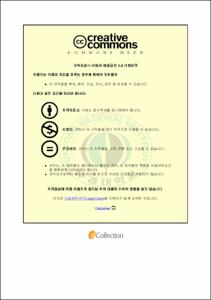고등학교 1학년 영어교과서에 나타난 상대시제 분석
- Alternative Title
- Relative Tense and Its Identification in First Grade High School English Textbooks
- Abstract
- The purpose of this study is ⅰ) to recognize how tense in a subordinate clause is interpreted relative to a reference point provided by the context, ⅱ) to classify “pure relative tense”, which relates the time of the situation relative to the reference point and “absolute relative tense”, which relates the time of the situation to the moment of speech via one or more intermediate reference times, ⅲ) to examine each frequency according to the form of the nonfinite verbs with the frame that is designed to specify its usage and finally ⅳ) to analyze the characteristics and practice between distinctive forms based on the first grade High School English textbooks.
Language is a form of communication in which the interpretation must be realized in a relative relationship. Relative tense should be understood in this matter as it needs to consider a reference point and locate a situation by logical inference from the context, otherwise it could describe different situations and might lead to a total misunderstanding. This dissertation aims to help open the possibility for the government to take into consideration the issue of relative tense in the textbooks or set any guidelines on this, for teachers to broaden its meaning and application to a classroom environment with concrete plans and for learners to appreciate the importance and develop a range of tense usage with more variety.
To achieve these goals, relative tense in three High School English textbooks were analyzed focused on Comrie(1985)’s approach. 193 nonfinite verbs in embedded clauses were not only classified into five different categories such as present participle, past participle, pluperfect, future perfect and future in the past but examined to identify the distinct features respectively. The results are as follows:
First, pure relative tense were four times more often used showing 79.27% frequency compared to absolute relative tense with 20.73% over all. Each textbook demonstrates dominant pure relative tense use as well with the same ratio. Regarding the most frequently appeared relative tense form in the textbook, the present participle was the best and past participle, pluperfect, future in the past follow after in order. Future perfect, however, wasn’t shown up at all throughout the whole reading passage in the context. It clearly represents that the relative complexity of absolute relative tense was reflected enough in the first grade textbooks, relatively lower than the second and the third considering a strong tendency of language to select rather easier and short form.
Next, the representatives of pure relative tense, present participle and past participle, illustrate that they are possibly interpreted into three different ways. The interpretation depends on whether they have absolute time reference, relative time reference or the time reference with some other time point given by the context as a reference point, which can be offered as an adverbial of temporal location or in the wider context. The notable attribute of each was that the present participle is always interpreted as coinciding with the reference point while the past participle has past time reference.
Finally, pluperfect, future perfect and future in the past that stand for absolute relative tense portray that they should consider the present moment to locate a situation along with a reference point as a form of combining both absolute time reference and relative time reference. Pluperfect is able to describe two individual situations on account of co-occurring time adverbials. The adverbials might determine a reference point but may also encode the time at which the situation is located depending on the context. With future in the past, a situation can be located at, before, or after the present moment based on a relative relation between a situation and the present moment. The background plays an important role to determine the chronological order here again. Time adverbials could describe a specific time point or interval of time longer than a point. Not a single item did show the first grade High School English textbooks regarding future perfect.
- Issued Date
- 2010
- Awarded Date
- 2010. 8
- Type
- Dissertation
- Publisher
- 부경대학교
- Alternative Author(s)
- Lim, Ji Sun
- Affiliation
- 부경대학교 교육대학원
- Department
- 교육대학원 영어교육전공
- Advisor
- 박순혁
- Table Of Contents
- Ⅰ. 서론 1
1.1 연구의 필요성 및 목적 1
1.2 연구의 구성과 제한점 4
Ⅱ. 이론적 배경 5
2.1 절대시제(Absolute tense) 5
2.1.1 현재시제(Present tense) 7
2.1.2 과거시제(Past tense) 9
2.1.3 미래시제(Future tense) 11
2.2 상대시제(Relative tense) 14
2.2.1 순수상대시제(Pure relative tense) 15
2.2.2 절대상대시제(Absolute relative tense) 19
Ⅲ. 연구방법 28
3.1 연구대상 28
3.2 연구도구 29
3.3 연구도구 설계 31
3.3.1 고려된 항목 31
3.3.2 선행연구 34
3.3.3 제7차 영어과 개정 교육과정 38
Ⅳ. 결과 분석 및 논의 40
4.1 순수상대시제(Pure relative tense 43
4.1.1 현재분사(Present participle) 44
4.1.2 과거분사(Past participle) 50
4.2 절대상대시제(Absolute relative tense) 56
4.2.1 대과거(Pluperfect) 56
4.2.2 미래완료(Future perfect) 60
4.2.3 과거 속 미래(Future in the Past) 61
4.3 Sample Lesson Plan 64
Ⅴ. 결론 77
참고 문헌 81
- Degree
- Master
- Files in This Item:
-
-
Download
 고등학교 1학년 영어교과서에 나타난 상대시제 분석.pdf
기타 데이터 / 758.35 kB / Adobe PDF
고등학교 1학년 영어교과서에 나타난 상대시제 분석.pdf
기타 데이터 / 758.35 kB / Adobe PDF
-
Items in Repository are protected by copyright, with all rights reserved, unless otherwise indicated.